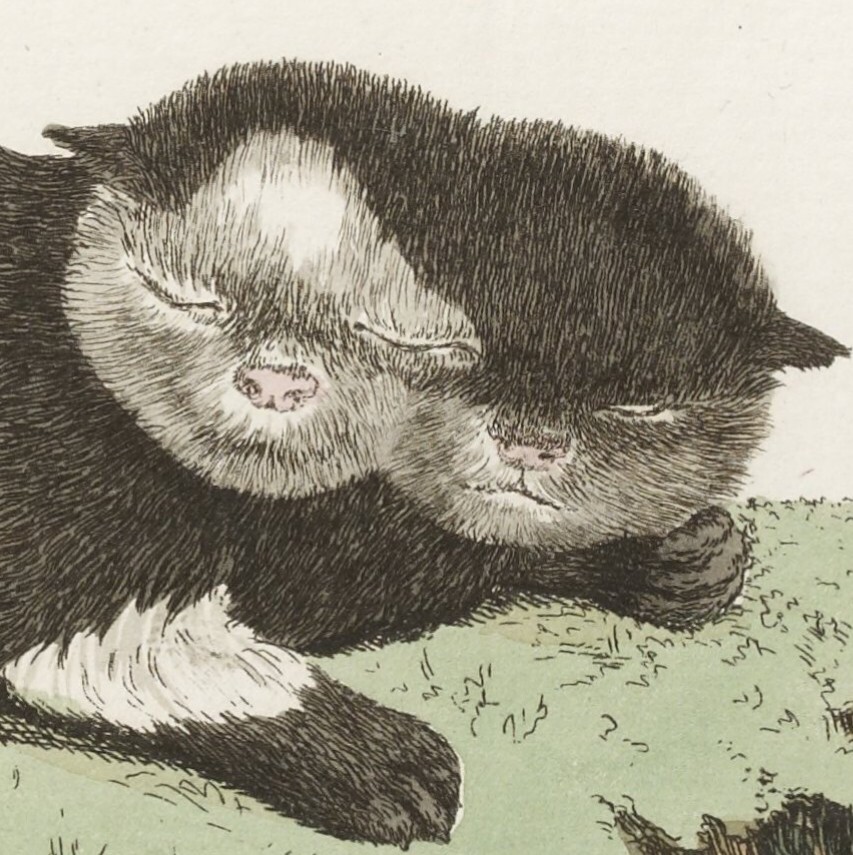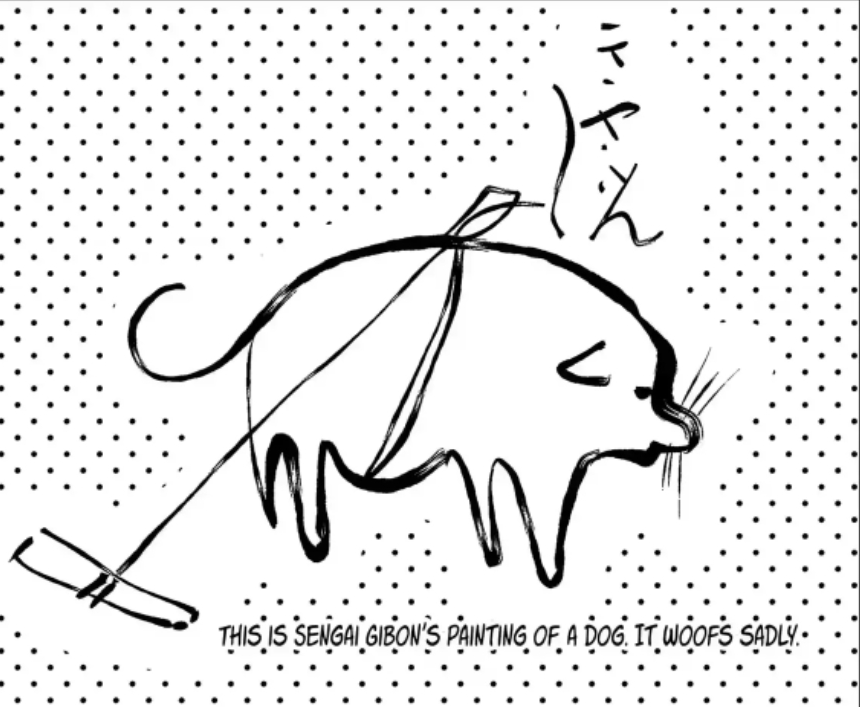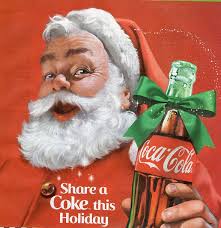For decades these pens have been brought up to criticize wasteful spending, inaccurately. Fisher Price didn’t even develop the pens for NASA, they were just a sales gimmick, and NASA didn’t spend thousands of dollars each on them, they just bought them. Space flight was getting a lot of publicity back then, so products that related themselves to space were popular, like Space Food Sticks - tootsie-rollish snacks supposedly full of protein and nourishment. To me they tasted too much like raw flour. “Energy” of course was a euphemism for sugar.

Also you DON’T FUCKING WANT GRAPHITE DUST FLOATING AROUND IN ZERO G
Why not? I’m not well versed in the theme. Would it be flammable?
edit: just saw another post mentioning this: lack of gravity, enter floating in the electronic, causing short circuits as main risk.
The theme is to pretend recently-learned information was available half a century ago, and also to ignorantly inflate its importance. It turns out exposure to graphite dust in large concentrations can cause respiratory problems (like any kind of dust), but the amount of graphite emitted into the air by pencil use is insignificant, even in zero gravity.
Also your body doesn’t do a good job of breaking it down either. Id imagine that in your lungs would suck.
I have a piece of graphite in my leg from 7th grade still. I’m 33.
I have a graphite stain in my palm from 8th grade and I’m 40.
Left handed or did you get stabbed too?
The reason not to use pencils in Space wasn’t that Pencil are inflamable, the main reason was the graphit dust produced by Pencils, which because of the lack of gravity, enter floating in the electronic, causing short circuits as main risk.

That is something I found weird, too. Inflammable and flammable mean the same thing!
Technically, I think they’re different. Flammable means that it can be lit on fire, like wood or something. Whereas inflammable means it can catch fire on its own, like gas, for example.
Edit: after some googling, it appears that my source was shit and should be disregarded. They do indeed appear to be synonyms. And also, I was thinking of gasoline. I think I was thinking of the “gas pedal” and that threw me off.
Credit to you for the self-correction though

Synonyms, true synonyms. No real difference between them (except don’t use inflammable in safety situations, for above reasons)
saying that “gas” is able to catch fire on its own is stretching it :) A gas mix typically still needs a spark, unlike: https://en.wikipedia.org/wiki/Hypergolic_propellant <- that stuff can “catch fire” on its own. But even there - it needs to be mixed, so technically, one component requires the other to ignite.
Yeah, my bad, shit example.
United States education system
It makes more sense if you think of it as enflammable. Indent and indebted at examples of this “in-” prefix. https://www.merriam-webster.com/grammar/flammable-or-inflammable
If you want to keep things crystal clear, choose flammable when you are referring to something that catches fire and burns easily, and use the relatively recent nonflammable when referring to something that doesn’t catch fire and burn easily. Inflammable is just likely to enflame confusion.
The people at Merriam are alright 👌
Flammable isn’t a word.
Just Americans got confused by it so it became a word.
So then it is a word
A word made for stupid people, yes.
Also a broken bit of lead could easily float into someone’s eye or get aspirated.
Probably not great for eyes or noses or filtration systems either
Twist: you’re the filtration system.
I guess we are in a way a filtration system that removes oxygen from the air…
Ok there Ongo Baglogian
Genuine question. why did you choose to use “inflammable” instead of “flammable”?
Inflame was the original word for ‘to ignite’ - to set aflame, to set on fire. We still see if in metaphor, ‘inflammatory argument’ or ‘inflamed passion’, for example.
So an inflammable object was one you can inflame (or enflame). The word ‘flammable’ came about later, probably to reduce confusion for people who thought it mean ‘un-flameable’.
These days we use flammable on labels for safety reasons, but inflame is still peppered throughout language in metaphor and medicine, and both are correct.
inflammation, inflamed, inflammable
inflammable = easily ignited
Lapsus
lapis
Skamtebord
Oh dear, the internet is leaking again… Call the locksmith 🗣️
This is the most upvotes I think I have ever seen on a comment here.
and thin paper shavings = space kindling. the entire argument is fucking dumb.
perhaps the sovs gnawed their pencils sharp and consumed all the graphite fragments and shavings lol. good lil soviet space beavers
The Soviets were using grease pencils IIRC before also switching to the Fisher Space Pen around 1969. The grease pencil eliminated the risk of graphite floating around but the writing quality isn’t great.
If I remember correctly, the Soviet engines were a lot harder to short out, so pencils weren’t as big a problem in their spacecraft.
the Soviet engines were a lot harder to short out,
bwahaha this is idiotic. anyone familiar with the long litany of rocket failures out of baiknor knows their engines weren’t ‘harder to short out’ whatever silly shit you mean with it.
short out what? the alternator? bwahahahahaahahahaha
short out the fuse box? dear god, I’m dying here
also, fucking pencil shavings?
pencil shavings contain graphite (great for getting into shit and shorting shit out) and thin paper (think, kindling)
did the russians gnaw the fucking things sharp? no? idiots…
Grease pencil, you pull a tab and the things unrolls.
side note, mechanical grease pencils are literally some of the best goddamn marking tools ever invented by humans, and the fact that we’ve moved away from them as a standard in favor of sharpie-style disposible markers is APPALLING.
there’s myriad “industrial” markers you can buy, which are generally especially well suited to one specific inclement situation. low temp markers won’t freeze, but will often bleed and feather. oil-proof markers will write on a slippery surface, but will smear and take ages to dry proper (RIP lefties). paint markers can write on anything, but only as long as the surface doesn’t immediately destroy your nib and prevent future wicking.
grease pencils (quality ones at least) go down like a crayon, stick to ANYTHING, and generally won’t smear at all. obviously no one should be writing their thesis with one, but they can do pretty much everything we use permanent markers for. they’re also cheaper and produce far less waste.
as far as i can tell the biggest downside is there’s a smaller profit margin for the manufacturers.
I love my grease pencils and use them for writing kitchen leftover contents on glass and ceramic dishes. This works like a dream when the dish is warm and just fine when the dish is room temperature.
However, it’s nearly impossible to write on cold or frozen dishes. In my old lab when was young and stupid, I’d hold the spot I wanted to write on over a flame for a few seconds (lucky I never exploded a liter of expensive research water and glass on myself, or worse). Now I do my best with vigorously rubbing the spot with a kitchen towel for a few seconds, but still usually get a barely readable mark.
Aside from figuring out how to etch those little white squares that lab glassware has onto my kitchen dishes, anyone have any ideas around this?
also you can etch those lil white squares surprisingly easily with commercially available glass etching creams, my mom used to fuck around with em a lot in like the 90’s i think.
oh god oh fuck what have you done do you understand how many niche DIY toolkits I have now I’m forced to add another
edit: oh wait it’s just one bottle. what’s one more bottle of engineering goo? 🫠
maybe a difference in the actual composition of the grease? i was writing on polished stainless pots at below freezing temps, but i was ALSO using new-old-stock refills bc the current standard size is it’s own proprietary can of worms lol
Huh. Never occurred to me they likely come in different compositions for different uses.
Im a fan of grease pencils yeah, especially for marking on windows. I’m a mechanic and sometimes I just do the diag notes on the cars Windows or if laziness.
nice alternative, and that’d make great sense except… now you have a bunch of long strings of grease covered paper floating about the cabin.
so no. no thanks.
I’m pretty sure astronauts are trained on the usage of garbage receptacles.
No I mean that’s literally what they were using not graphite.
having used grease pencils before, no thanks, due to the remainder of greasy paper you unwind as you use it.
They aren’t suggesting using a grease pencil as a better alternative to a graphite pencil, they are saying that the Russian cosmonauts used grease pencils before moving to a pressurized pen.
You don’t need to say “no thanks” to it, no one is suggesting using it. The first comment was ambiguous, but your response to this one is just baffling.
no thanks.
Think of how revolutionary crayola twistables would have been for NASA?
So they could have infinite chunks of broken crayan floating around them. I can never not break those no matter how lite I use rhem
You’re the kid I stopped sharing my colours with.
Oh shit wassup
The air filters would capture it eventually. It’s not like the ISS has dead air.
You’re assuming I wouldn’t try to eat them all like floating packman
Besides that, NASA wasn’t the one that funded the research behind the pen, they bought the completed pens. The expenses for the research were funded by Fisher
NASA still foots the bill either way. In this arrangement, the cost of development is simply included in the price of the product plus a fixed profit margin. Such ‘cost-plus’ contracts are criticized because it eliminates competing for efficiency and incentivises contractors to make their solutions as complicated and expensive as possible.
Your points about a cost-plus contract have merit but aren’t applicable here because the pens weren’t developed under a contract at all. Paul Fisher of the Fisher Pen Company had started developing a pressurized pen before the space program even began (to develop a pen that could write in other orientations than on a desk), although learning of the concerns from the program gave him renewed impetus to solve the design. Fisher patented the design in 1966 after ten years of development and about $1 million in cost. Prior to the pens NASA had been purchasing special pencils at $128.89/each. The original purchase order for the pens bought 400 at $2.95/each.

The Soviet space program bought the pens in 1969, and besides the Americans they’re still used today by the Russian and Chinese space programs. You can buy one yourself for as little as $7 if you don’t care about it being refillable. On the one hand that’s a lot for a disposable pen, on the other hand that’s not terribly expensive for a pen that writes upside-down if you need that, and might not feel too bad if you’re prone to losing pens.
Can we still buy one of the special space pencils? Were they low-dust or something?
Yeah, what’s the story with these pencils?
Also don’t felt tip pens write upside down?
I don’t know if anyone still makes the pencils. IIRC they used a special formulation for the graphite that reduced the dust and risk of breakage, but I don’t think there’s much market for that outside the space program since that’s about the only place the dust would float and be hazardous. The pens were in development even before the space program because there’s a market for pens that can write in unusual orientations. I’m sure the marketing of it being a pen used in space helps expands that market some, but the market would exist regardless. It’s supposed to be a nice pen to write with also, although I don’t know how much of that is kind of a placebo to justify spending $10-20+ on a pen. I’m sure it’s nicer than a 50¢ pen, though.
Felt pens can be prone to leakage, especially in lower atmospheric pressure. This can be a problem even in airliners, and definitely not what you want in space. There’s nothing in the pen mechanism to seal the ink in when not in use. A properly made ballpoint pen actually seals the ink in when not in use. That was Bíró’s big selling point over earlier technologies like fountain pens; the pen still writes even if you leave it uncapped and the ink doesn’t dry out. The Bic pen was revolutionary for creating a manufacturing process that could produce them cheaply.
Good reply. Thanks! You know a lot about pens.
they will for a bit
Pens are dust-free as is, the problem with a regular ballpoint or felt tip pen is that both inking mechanisms rely on gravity. When you’re in 0g the ballpoint won’t work at all and the felt will stop working after a point when there’s no gravity to pull more ink to the tip.
You could probably spin a felt until it rewets but you’d be liable to make a mess as well.
Don’t felt tip pens work by capillary action?
That do. The failure comes if the spacecraft use lower air pressure, then the ink is pushed out of the pen by the pressurised gas in the ink
The same thing causes some pens to leak in aeroplanes.
You’re just raising the question about why the pencils cost over $100 if all pencils are dust free. What was so special about them when the special pens were so cheap?
Pens are dust-free, pencils are not. Dust-free pencils are special and expensive because it’s a lot of chemistry and testing to ensure that. How do you cleanly sharpen a pencil for example? Special pens are special but cheap because the components to make them are still relatively simple, the ink is still standard. More expensive than standard pens by a fair bit but a lot cheaper and more practical than the pencils.
I misread you as saying pencils are dust free.
Now this is the calligraphic geekout I came here to see
so, there are refillable one’s too. okay.
Fisher’s claim to fame before inventing the Space Pen was inventing a universal replacement ink cartridge. You can even put the space pen cartridge in pens from other manufacturers.
Except this wasn’t a cost plus contract, this was NASA buying a thing at discount on the open market. In fact, the USSR paid the same discounted bulk price per pen that NASA did.
To add onto the other comment:
NASA wouldn’t have to pay anything if the research didn’t work out and maybe even avoided other companies who then weren’t compensated for their efforts.
I’ve owned a fair few Fisher Space Pens throughout the years. It’s an interesting bit of space memorabilia that’s functional and affordable. It’s an impressive bit of engineering.
As a space nerd, I love the pen. As a pen guy…. There’s better options. The cartridge just doesn’t write as smooth as I like, nor is it a really bold, saturated line. For daily actual writing use, I use a Lamy Safari rollerball or a Pilot B2P.
They’re small, but when you open them up, they’re full-sized. It fits in my knockoff Ridge wallet. I buy blue cartridges because I hate signing stuff in black.
10/10 for me, but it’s all about utility for me.
Rite In The Rain pens are awesome too. Ultralight for backpacking.
It’s a cool pen. “Btw, this pen was the same type of pen used by Astronauts”; I mean, how’s that for a conversation starter 😁
Conversation starter, or an entire episode of Seinfeld
TAKE THE PEN
Both? Yes, both, both is good.
NASA used crayons before those space pens, and iirc the pens were available for a while before they tried them
NASA used crayons before those space pens, and iirc the pens were available for a while before they tried them
this is partially correct; the missing pertinent bit - there was a crayon shortage due to the influx of marines recruited for the vietnam war (mmm crayola), forcing NASA to seek alternatives.
Plus, inhaling graphite dust since it doesn’t fall doesn’t sound fun.
Plus, graphite dust and electronics are also not a great combination.
It’s carbon dust, which your body is pretty good at dealing with, and in quantities so trivial you probably already inhale more currently than you would using a pencil in an otherwise mostly sterile spaceship (at least sterile compared to earth)
Have you broken a pencil tip? I wouldn’t want to breath that in after it goes flying.
Hardly anything is less problematic than graphite. No idea why you think that is an issue.
You’re probably thinking “it’s just carbon, nbd”, but that doesn’t mean it’s good for your lungs:
https://www.inchem.org/documents/icsc/icsc/eics0893.htm
“Repeated or prolonged inhalation of dusts may cause effects on the lungs. This may result in graphite pneumoconiosis”
Nothing is good for lungs, that’s the point. Workers inhaling stuff for 8 hours, 5 days a week for 30+ years with 20 % having respiratory symptoms is the kind of “dangerous” we are taking about here. What is NOT problematic at such exposure?
I mean water is toxic if you drink too much. The amount of dust of a pencil is negligible… now graphite from pencil production? Thats more concerning.
“I mean, water is toxic if you drink too much”
Translation: “my argument is lazy and not really well thought out, I’m not going to even acknowledge your point, I’m just gonna double down”
No it’s not. He said that the dose from writing with a pencil is trivial, but working in a factory that produces such pencils could potentially be dangerous, presumably because that’s a much higher sustained dose.
You want a long drawn out answer? Ok then. Simple fact, our world is naturally dirty, just go outside in spring and you’ll breathe in untold amount of pollen everyday. Yet our lungs cope. How? By excreting mocus and its cilia to carry out foreign material out. However, if an excess amount of foreign material overwhlems the protections the lungs offers, then problems occurs. That of course ignores materials that are toxic, radioactive, or carcinogenic. So unless you are using a pencil made from pure carbon-14… its harmless.
If you wanted clarification or a ELI5, next time just ask instead of being passive agressive.
What do you mean? Graphite can be fine or sharp, you saying it’s fine to breathe in? I know I wouldn’t want to breath in a broken tip of a pencil.
All this concern about particles when breathing in whole pencils is the most dangerous of all!
You had me in the first half, not gonna lie. Well and the second too.
Apollo 1 resulted in a lot of improvements regarding fire safety.
People drag the Soviets for being reckless with the lives of their crews, but forget that the USA melted three men in a training exercise.
at least those three were known, acknowledged and not covered in secrecy.
we really have no idea how many the sov’s lost in their rush to stay ahead / catch up to the moon landings. truly, there’s no way to fucking know, even the cosmonauts themselves never knew the total extent.
maybe they both deserve to be dragged a bit eh? pfft
This is inaccurate. Graphite is not flammable. It forms small particles that, mixed with air, could combust in a dust explosion, just like flour.
I’m probably just being dense but what’s the difference between being flammable and being susceptible to combustion?
In technical safety terms, combustibles are harder to ignite than flammables. So diesel and olive oil are combustibles, for example, because neither of them give off enough ignitable vapour at room temperature. Ethanol does, so it gets classified as flammable, and you need to store and handle it more carefully than diesel. Then there’s really horrible stuff like triethylborane which will catch fire upon meeting oxygen even at temperatures well below the freezing point of water
Of course in casual usage they mean the same thing
They’re referring to the relationship between surface area and combustion. Talc, for example, melts but does not burn. Talc powder can ignite if blown over an open flame.
My first thought was: “I must try this”. I need to read my house insurance policy first.
Curiosity got the better of me when I waved an alcohol wipe over an open flame. There’s still a dark mark on the office carpet tile from where I had to stamp it out.
Please invest in a fire blanket and keep it near by when you do stupid things with fire.
Signed, a fellow fire bug
Mine paid for itself the first time a flame got out of control while I was having some fun. No lasting burns to human or objects in my office lol.
Keep away from dust explosions, they are very uncontrollable because they ignite very fast and produce a lot of heat. It’s technically not an explosion, but it definitely is an easy way to burn your house down.
Mythbusters did this with coffee whitener as I recall. Impressive.
This has also happened to sawmills and flour mills, under less controlled circumstances.
Let it be someone else’s carpet. Or in this case, driveway.
Skip to 3:10 for the action.
deleted by creator
You’re not dense for asking a question. Without asking questions, it’s Impossible to learn.
The flash point is different. The flash point is the temperature that is necessary to create enough vapor for the substance to ignite.
Flammable material has a low flash point, which means it catches on fire easily. Think gasoline. Combustibles need a higher initial temperature, but eventually they will burn and sustain the burning until running out. Think wood.
Makes perfect sense, thank you
You misgendered round spicy flames
Wood.
Wood is also combustible. You need a lot of heat to make wood burn. Hold a lighter to your pencil, it will not instantly catch fire, do the same with paper and you need a water bucket nearby.
Sharpen the pencil and create a bunch of tiny shavings then put them in a pure O² environment. They’ll light up real fast.
Tbe Apollo 1 fire spread so quickly because in a pure O² environment fucking velcro was super flammable.
Yeah, try lighting your pencil on fire in a 100% O2 environment. It’s not the pencil being flammable that was dangerous, it was the pure oxygen atmosphere making the pencil extremely flammable to the point where a small spark from static electricity could cause it to almost instantly immolate, that made it dangerous.
Finer bits of wood, like sawdust, or pencil shavings from sharpening, catch fire much more readily than a solid chunk of wood like a whole pencil.
Given the right environment, finer sawdust can even be explosive.
A lot of campers and other outdoorsy types are probably familiar with using “feather sticks” to start a fire, where you take a stick and cut a bunch of fine curls into it, almost like you’re whittling down the stick but leaving the shavings attached.
The whole stick wouldn’t readily catch fire, but those finer curls attached to it will light pretty easily and spread to the rest of the stick.
And while I’ve seen some pretty impressive feather sticks made by people with a steady hand and sharp knife, most of the time those feathers aren’t quite as fine as most pencil shavings.
Let us just note that this would be impossible when using it to write something.
deleted by creator
I don’t know where you got any of this, your comment makes the least sense of anyone in this post, and some of these people are actually wrong
Well now I’m incredibly disappointed that I can’t see what it was
Do they even “write” in space any more? Isn’t it all screens?
I have one on my keychain, highly recommend
I got big into pens for a bit before settling on my edc one-size-fits-most pen. During my travels, I saw that the Fisher Space pens are still highly regarded as great writers even for us grounded folk. Yeah, there’s better, but for the size and build quality they’re great options. I went with the Ti Arto by Big Idea Design instead. Just so I could use basically any pen cartridges (except cheap bic roller ball).
Huh, the Arto used to be 70usd. I’d say not worth anymore. I got the black one and the paint has already chipped plus the clip is not titanium unless you buy an expensive “premium” clip.

















